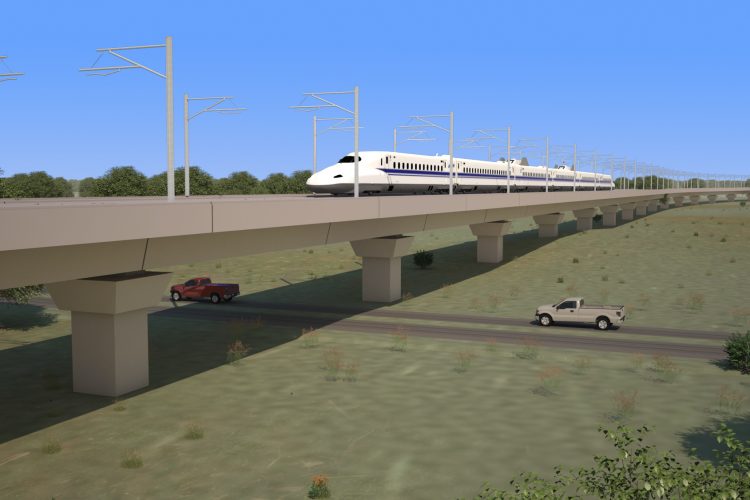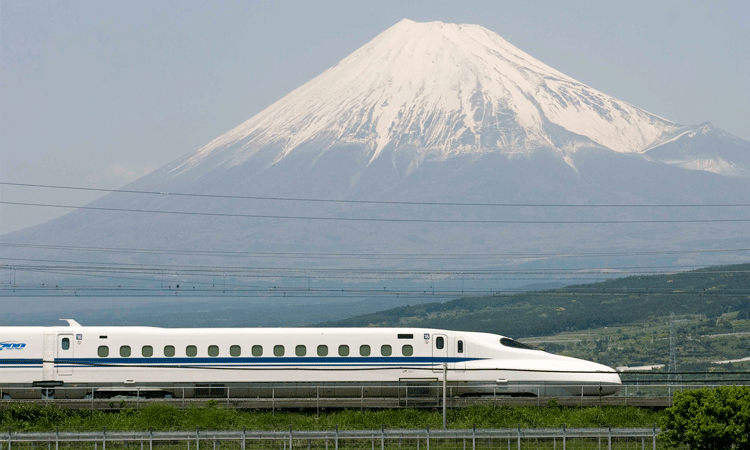Texas Central chooses environmental partner to work along high-speed route
Posted: 5 February 2019 | Global Railway Review | No comments yet
Texas Central, the developers of the high-speed train line that will connect North Texas, the Brazos Valley and Houston, have named Resource Environmental Solutions (RES) as the project’s provider of ecological mitigation services to help protect and enhance natural ecosystems and the environment throughout construction and operations.


Credit: Texas Central
RES will oversee plans to comply with U.S. Army Corps of Engineers’ (USACE) requirements that the project restores, enhances and preserves wetlands, streams and environmentally-sensitive habitats along the route between Houston and North Texas.
RES has led several high-profile projects across the state and nation to safeguard local flora and fauna and the sensitive ecosystems they inhabit. Texas Central’s partnership with RES reflects its commitment to low-impact design strategies and environmental stewardship, avoiding and minimising ecological effects during construction and operation of the passenger line.
RES will help Texas Central meet or exceed regulatory requirements for environmental mitigation and will collaborate with community leaders to identify local and regional conservation opportunities.
The environmental work, combined with innovations of the all-electric high-speed train system, will provide the most environmentally-friendly travel choice for journeys between Houston and North Texas. The train is estimated to remove more than 14,630 cars per day from interstate 45, offsetting emissions in an area covering four counties that are in air quality nonattainment status. Other benefits include:
- Compared to highway development, for every one-mile of high-speed rail tracks, approximately 450 acres of farmland will be preserved
- The all-electric system will utilise the latest in green technologies, such as regenerative braking systems
- Texas will use the newest generation of Shinkansen trains, the N700 Supreme, which consumes seven per cent less energy and weighs seven tonnes less than the previous model. Lighter trains result in less noise, vibration and impacts on materials and land
- The route largely follows existing rights-of-way corridors, resulting in the fewest possible impacts to socioeconomic, natural, physical and cultural environments.
Texas Central’s Bill Tucker, the Project Delivery Director, said: “The elite team of ecologists at RES will help safeguard local ecosystems, and this is one more example of our approach to protect the land and wildlife in a delicate manner. As Texans, RES understands the importance that Texans place on preserving the natural beauty of our great state, and we are confident that this systematic approach to restoring and preserving sensitive ecosystems will result in widespread improvements across the region and beyond.”


Texas will use the newest generation of Shinkansen trains, the N700 Supreme. Credit: www.texascentral.com
RES joins a team of global leaders designing and building the Texas train, and it will be responsible for protecting the natural beauty of Texas while also equipping the state to be economically competitive in the 21st century.
“We believe that by engaging with partners dedicated to low-impact design and development, it’s possible to achieve both environmental sustainability and advanced infrastructure,” said Elliott Bouillion, CEO of RES. “The Texas high-speed train is an excellent example of how a modern, green infrastructure approach can be harnessed for both ecological and economic benefits.”
RES will develop a far-reaching plan to rebuild and restore wetlands and streams in the impacted watersheds as part of a comprehensive mitigation strategy. Preliminary ecological planning calls for stream and wetland restoration, enhancing the viability of several sub-watersheds close to the route.
Brian Trusty, Vice President of the Audubon Society, praised the move to bring on RES: “At Audubon, we believe the project is a win-win opportunity for both Texans and the wildlife in our state. Providing large-scale transportation opportunities that work to reduce carbon emissions, while supporting further economic prosperity and connectivity between the Dallas and Houston metro areas, is progressive and forward-looking. Partnering with RES ensures the project will be done right, and we are thankful to see Texas Central take this step.”
The project’s scale will allow RES to identify not only isolated pockets along the route that require restoration, but also entire complexes of streams and wetlands suitable for improvement and conservation. Specifically, RES will select mitigation sites and designs that collectively improve the ecological functions of broad areas, including some near the Trinity River, Navasota River, Spring Creek and Cypress Creek.
RES will help ensure that project meets or exceeds all environmental mitigation requirements and enhances local ecosystems and communities. This will help strengthen and connect wildlife habitat corridors, improve water quality along the route and increase flood resiliency. That work will be in collaboration with the USACE, which has solicited public comments on the Section 404 application now under review for the project.
Related topics
High-Speed Rail, Infrastructure Developments, Regulation & Legislation, Route Development, Sustainability/Decarbonisation








